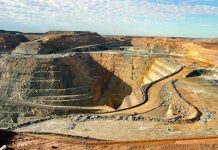DM Monitoring
BEIJING: Since China made the development of the Yangtze River Economic Belt a national strategy, the country has shown firm determination in enhancing the ecological protection of its “mother river” and facilitating green, sustainable and high-quality development.
The sprawling economic belt covers 11 provinces and municipalities from west to east, with Sichuan, Guizhou, Yunnan and Chongqing in the upper reaches, Hubei, Hunan and Jiangxi at the center, and Anhui, Jiangsu, Zhejiang, and Shanghai in the lower reaches. Five years ago, Chinese President Xi Jinping presided over a meeting on the Yangtze River Economic Belt in the Chongqing Municipality, which unveiled a new chapter for the ecological conservation and green development of the region.
The status and role of the river and economic belt mean development must prioritize ecology and green development to respect natural, economic and social rules, said Xi. Two years later at a symposium held in Wuhan, capital of central China’s Hubei Province, Xi stressed the importance of achieving high-quality economic growth through the development of the economic belt. “In developing the economic belt, the key lies in properly dealing with the relationships between pressing ahead on the whole and making breakthroughs in key areas, between ecological environment protection and economic development, between making an overall plan and making unremitting efforts, between getting rid of old growth engines and cultivating new engines, and between developing individually and developing in a coordinated way,” he said.
At a symposium he chaired last November in Nanjing, east China’s Jiangsu Province, Xi said that provinces and municipalities along the Yangtze River should find their respective positions in the new “dual circulation” development pattern and take the initiative to open up their markets to the world. Over the past five years, transitional changes have taken place in the ecological and environmental protection of the Yangtze River Economic Belt.
A total of 8,091 chemical enterprises have been relocated, transformed or suspended along the economic belt in the past five years. In the first 10 months of last year, over 86.1 percent of the region’s water met a level-three standard or above, rising 12.8 percentage points from 2016, official data shows. China classifies water quality into six levels, from level one, which is suitable for drinking after minimal treatment, to level six, which is severely polluted.
The country’s top legislature adopted a law at the end of last year on Yangtze River conservation, which will take effect on March 1, 2021.
As China’s first legislation for a specific river basin, the law was formulated to strengthen the protection and restoration of the ecological environment of the Yangtze River basin, facilitate the effective and rational use of resources, safeguard ecological security, ensure harmony between humans and nature, and achieve sustainable development.
A 10-year fishing ban, effective from Jan. 1, covers all key waters of the Yangtze River. The move will help the country’s longest waterway recover from dwindling aquatic resources and degrading biodiversity. A fishing ban in 332 conservation areas along the river has been in place since the beginning of 2020.





